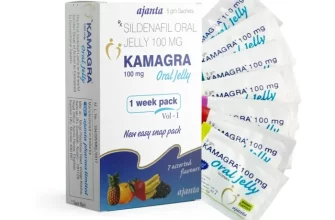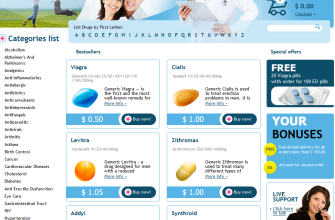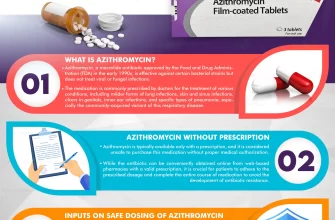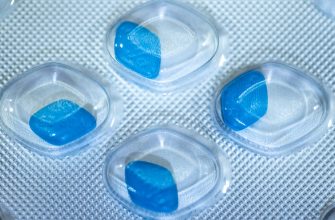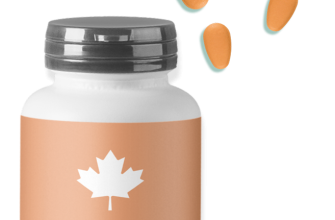If you are considering the use of a generic version of Paxil, known as paroxetine, you can expect a comparable effectiveness in managing conditions like depression, anxiety, and OCD. Generic medications contain the same active ingredients as their brand-name counterparts, offering an affordable alternative without compromising quality. It is essential to consult with your healthcare provider to determine the most suitable option for your specific needs.
Understanding the dosage is crucial. Paxil is typically prescribed in doses ranging from 10 mg to 60 mg, depending on the condition being treated. Be sure to follow your doctor’s instructions regarding dosage and frequency to optimize your treatment and minimize potential side effects.
Side effects such as nausea, fatigue, or sexual dysfunction may occur. Most of these are mild and may diminish over time. However, if you experience severe reactions such as suicidal thoughts or extreme changes in mood, contact your healthcare provider immediately.
Comparing prices and local availability can help you find the best option. Many pharmacies offer competitive pricing on Paxil generics, and some may have discount programs. Always inquire about potential savings when discussing prescriptions with your pharmacist.
Making an informed decision about your treatment can enhance your overall well-being. By opting for a Paxil generic, you gain access to the same therapeutic benefits while managing your medication costs effectively.
- Paxil Generic Drug: A Comprehensive Guide
- What is Paxil and Its Generic Equivalent?
- Mechanism of Action of Paxil and Its Generics
- Indications for Use of Paxil Generic Drug
- Dosage Guidelines for Paxil Generic Medication
- Adjustment Recommendations
- Discontinuation Guidelines
- Potential Side Effects of Paxil and Its Generics
- Serious Side Effects
- Long-Term Considerations
- Drug Interactions: What to Know Before Taking Paxil Generic
- Common Interactions
- Alcohol and Stimulants
- Differences Between Brand Name Paxil and Generic Versions
- Chemical Composition
- Cost and Accessibility
- How to Safely Transition from Paxil to Its Generic
- Understanding the Generic Formulation
- Monitoring Your Response
- Cost Comparison: Paxil vs. Its Generic Version
Paxil Generic Drug: A Comprehensive Guide
Paxil, known generically as paroxetine, offers relief from anxiety and depression. Choose the generic option for a cost-effective solution, without compromising quality.
Paroxetine functions as a selective serotonin reuptake inhibitor (SSRI). This characteristic helps increase serotonin levels in the brain, promoting improved mood and emotion regulation.
Common dosages for paroxetine tablets include 10 mg, 20 mg, and 30 mg. Start with the lower dosage to assess tolerance, gradually increasing only after consulting with a healthcare provider. This approach minimizes potential side effects.
Side effects can include nausea, daytime drowsiness, or dry mouth. Monitor your response, and report persistent issues to a healthcare professional. Staying hydrated and maintaining a balanced diet can help mitigate some side effects.
Interactions with other medications may occur. Inform your doctor of any additional prescriptions, over-the-counter drugs, or supplements taken to avoid complications. Always follow your provider’s directions regarding medication management.
Consistency in taking paroxetine is key. Aim to take the medication at the same time each day to maintain steady levels in the bloodstream. If you miss a dose, take it as soon as possible, but skip it if it’s nearly time for the next dose. Never double up on doses.
Discontinuing paroxetine should be approached cautiously. A gradual tapering process is often recommended to reduce the risk of withdrawal symptoms, such as dizziness or irritability.
Regular follow-ups with your healthcare provider are beneficial. These appointments allow for adjustments to the treatment plan based on progress and any side effects. Open communication ensures optimal outcomes.
In summary, choosing Paxil’s generic counterpart can be a smart move for managing anxiety and depression effectively. With careful usage and ongoing medical support, many find significant improvement in their symptoms.
What is Paxil and Its Generic Equivalent?
Paxil, known generically as paroxetine, is an antidepressant belonging to the selective serotonin reuptake inhibitor (SSRI) class. It primarily treats depression, anxiety disorders, obsessive-compulsive disorder, and post-traumatic stress disorder. Paxil works by increasing serotonin levels in the brain, which helps improve mood and alleviate anxiety.
The generic version, paroxetine, provides the same therapeutic benefits as Paxil but often at a lower cost. Both formulations are bioequivalent, meaning they have the same efficacy and safety profile. Patients can expect similar outcomes whether they choose the brand name or generic option. However, it’s essential to consult with a healthcare provider to determine the most suitable choice based on individual health needs and possible side effects.
Generic paroxetine comes in various forms, including tablets and extended-release capsules, enabling personalized dosage adjustments. Cost-effectiveness is a significant advantage of the generic option, making it accessible to more patients without compromising quality.
Side effects for both Paxil and its generic version may include nausea, drowsiness, dizziness, and sexual dysfunction. Monitoring by a healthcare professional is advisable to manage any adverse reactions effectively. Always discuss any concerns about switching from Paxil to its generic counterpart or vice versa with your doctor, as they can provide tailored advice based on your health history and current treatment plan.
Mechanism of Action of Paxil and Its Generics
Paxil, a selective serotonin reuptake inhibitor (SSRI), primarily increases serotonin levels in the brain. This action alleviates symptoms of depression and anxiety disorders. Serotonin, a neurotransmitter, plays a crucial role in mood regulation, and by preventing its reabsorption, Paxil enhances its availability in the synaptic cleft. This leads to improved mood and emotional stability.
The mechanism begins with Paxil binding to the serotonin transporter (SERT). This interaction inhibits the reuptake of serotonin into the presynaptic neuron. As a result, serotonin accumulates in the synaptic space, enhancing neurotransmission. The enhanced serotonergic signaling is linked to improved mood and decreased anxiety.
Generics of Paxil, such as paroxetine, operate through the same mechanism. Their biochemical profiles mirror that of the brand name, ensuring similar effects on serotonin levels. Users can expect comparable outcomes when switching to generics, as they maintain efficacy in affecting serotonin dynamics.
| Property | Paxil | Generic (Paroxetine) |
|---|---|---|
| Active Ingredient | Paroxetine | Paroxetine |
| Drug Class | SSRI | SSRI |
| Mechanism of Action | Inhibits serotonin reuptake | Inhibits serotonin reuptake |
| Treatment Use | Depression, Anxiety Disorders | Depression, Anxiety Disorders |
Clinical observations support the use of Paxil and its generics for long-term management of anxiety and depression. Regular monitoring of effects and side effects is recommended for optimal therapeutic outcomes. Always consult a healthcare provider before making any changes to medication. This ensures personalized treatment plans that align with individual health needs.
Indications for Use of Paxil Generic Drug
Paxil, known generically as paroxetine, is commonly prescribed for various mental health conditions. Below are the primary indications for its use:
- Major Depressive Disorder: Paxil alleviates symptoms of depression, improving mood and emotional well-being.
- Anxiety Disorders: It effectively treats generalized anxiety disorder (GAD) and social anxiety disorder, reducing excessive worry and fear in social situations.
- Panic Disorder: Patients experiencing recurrent panic attacks benefit from Paxil, as it can significantly decrease the frequency and intensity of these episodes.
- Obsessive-Compulsive Disorder (OCD): It helps manage the compulsive behaviors and obsessive thoughts associated with OCD.
- Post-Traumatic Stress Disorder (PTSD): Paxil is used to relieve symptoms of PTSD, including flashbacks and emotional numbness.
- Premenstrual Dysphoric Disorder (PMDD): This medication can reduce the emotional and physical symptoms associated with PMDD.
Each condition requires a tailored approach. It’s essential to consult a healthcare provider to determine the appropriate treatment plan based on individual symptoms and medical history.
Dosage Guidelines for Paxil Generic Medication
The recommended starting dose of Paxil is typically 20 mg, taken once daily, preferably in the morning. Depending on your response and tolerability, your healthcare provider may adjust the dose. The maximum recommended dose usually does not exceed 50 mg per day.
Adjustment Recommendations
If you are an elderly patient or have liver impairment, consider starting with a lower dose of around 10 mg per day. Gradual increments of 10 mg every week can help assess your body’s response. Regular follow-up appointments are necessary to make any needed adjustments.
Discontinuation Guidelines
When discontinuing Paxil, taper the dosage slowly. A reduction of 10 mg every week can help minimize withdrawal symptoms. Always consult your healthcare provider before making any changes to your medication regimen.
Potential Side Effects of Paxil and Its Generics
Paxil and its generics may lead to several side effects. Monitor your health closely when starting or adjusting dosage. Common side effects include:
- Nausea
- Drowsiness
- Dizziness
- Sweating
- Dry mouth
- Insomnia
These side effects generally diminish as your body adjusts. If they persist, consult your healthcare provider for advice on managing symptoms.
Serious Side Effects
Some individuals may experience more severe reactions. Seek immediate medical attention if you notice:
- Suicidal thoughts or behaviors
- Severe allergic reactions (rash, itching, swelling)
- Increased bleeding or bruising
- Seizures
- Unusual changes in mood or behavior
Be proactive about discussing these risks with your healthcare provider before starting treatment.
Long-Term Considerations
Long-term use of Paxil or its generics may lead to withdrawal symptoms upon discontinuation. Gradually tapering the dosage under medical supervision can help mitigate these effects. Be aware of potential sexual side effects, including decreased libido or difficulties in achieving orgasm, which can affect quality of life. Address any concerns with your doctor to explore alternatives if necessary.
Drug Interactions: What to Know Before Taking Paxil Generic
Consult a healthcare professional about potential drug interactions before starting Paxil generic. This medication can interact with various substances, impacting its effectiveness and safety. Always share your complete medication list with your doctor or pharmacist, including over-the-counter drugs, herbal supplements, and other prescriptions.
Common Interactions
Be cautious with medications that affect serotonin levels, such as other antidepressants, certain pain relievers like tramadol, and some migraine treatments. Combining Paxil with these can lead to serotonin syndrome, a serious condition. Anticoagulants and nonsteroidal anti-inflammatory drugs (NSAIDs) may increase bleeding risk when taken alongside Paxil, due to its effects on platelets.
Alcohol and Stimulants
Avoid alcohol while taking Paxil, as it can amplify side effects like dizziness and drowsiness. Stimulants, including some ADHD medications, might counteract Paxil’s benefits and should be used with caution. Regularly review your medications with your healthcare provider to ensure your treatment remains safe and effective.
Differences Between Brand Name Paxil and Generic Versions
Brand name Paxil and its generic counterparts are both used to treat depression and anxiety disorders. The primary distinction lies in their inactive ingredients. While both variations contain the active ingredient paroxetine, generics may include different fillers or binders. These components can affect absorption rates, resulting in variations in how quickly the medication takes effect. Patients may notice slight differences in onset or intensity of symptoms relief.
Chemical Composition
The active ingredient in both brand name and generic forms is paroxetine hydrochloride. The U.S. Food and Drug Administration (FDA) ensures that generics meet specific standards regarding the active ingredient percentage. However, slight changes in the formulation can lead to differences in tolerability. Some individuals might react differently to various brands or generics due to these formulation variations. Always consult your healthcare provider if you experience any unusual effects.
Cost and Accessibility
Cost often plays a significant role in the choice between brand name and generic Paxil. Generic versions usually present a more affordable option, as they do not require the same level of research and marketing investments as brand name drugs. Insurance plans frequently cover generics more comprehensively, allowing patients to manage their medication expenses effectively. Discuss options with your pharmacist or doctor to find the best financial fit for your needs.
How to Safely Transition from Paxil to Its Generic
Consult your healthcare provider before making the switch from Paxil to its generic version. They can guide you on the appropriate dosage and timing for your specific situation.
Start by discussing your current dosage of Paxil. Your doctor may recommend gradually tapering your dose to minimize withdrawal symptoms. Keep a close record of any changes in your symptoms during this period.
Understanding the Generic Formulation
Generic medications contain the same active ingredients as their brand-name counterparts. Familiarize yourself with the specific generic version your doctor recommends, including its manufacturer and formulation. Sometimes, different generics may have varying inactive ingredients which can impact your body’s response.
Monitoring Your Response
After transitioning, monitor your mental health closely. Note any changes in mood, anxiety levels, or side effects. Regular follow-ups with your healthcare provider will help address any concerns promptly. Consider keeping a daily journal to track your feelings and side effects during this adjustment period.
Stay open to communication with your healthcare team. If any adverse effects arise, or if you feel the new medication isn’t meeting your needs, reach out to your doctor immediately for further advice or adjustments.
Cost Comparison: Paxil vs. Its Generic Version
Paxil, the brand-name medication, tends to be more expensive than its generic counterpart, paroxetine. Patients can expect to pay varying amounts based on their insurance plans and pharmacies. On average, Paxil costs around $250 for a month’s supply without insurance, while the generic version is available for approximately $40 to $70.
For those without insurance, opting for generic paroxetine provides significant savings. Generic medications maintain the same active ingredients and effectiveness as their brand-name versions but come at a lower price. Most pharmacies offer competitive pricing for paroxetine, with some even providing discounts or coupon options for additional savings.
Insurance coverage plays a crucial role in determining out-of-pocket costs. Many plans favor generics, which can lower co-pays significantly. Checking with your insurance provider can clarify whether the brand or generic form is more cost-effective.
Shopping around can yield better prices. Prices for Paxil and paroxetine can differ between pharmacies. Using online tools to compare costs can lead to finding the best deal.
In conclusion, the generic version of paroxetine typically offers substantial cost reduction while maintaining the same benefits as Paxil. For cost-conscious patients, considering the generic option is a smart decision.




